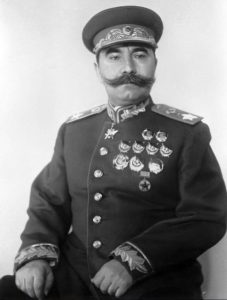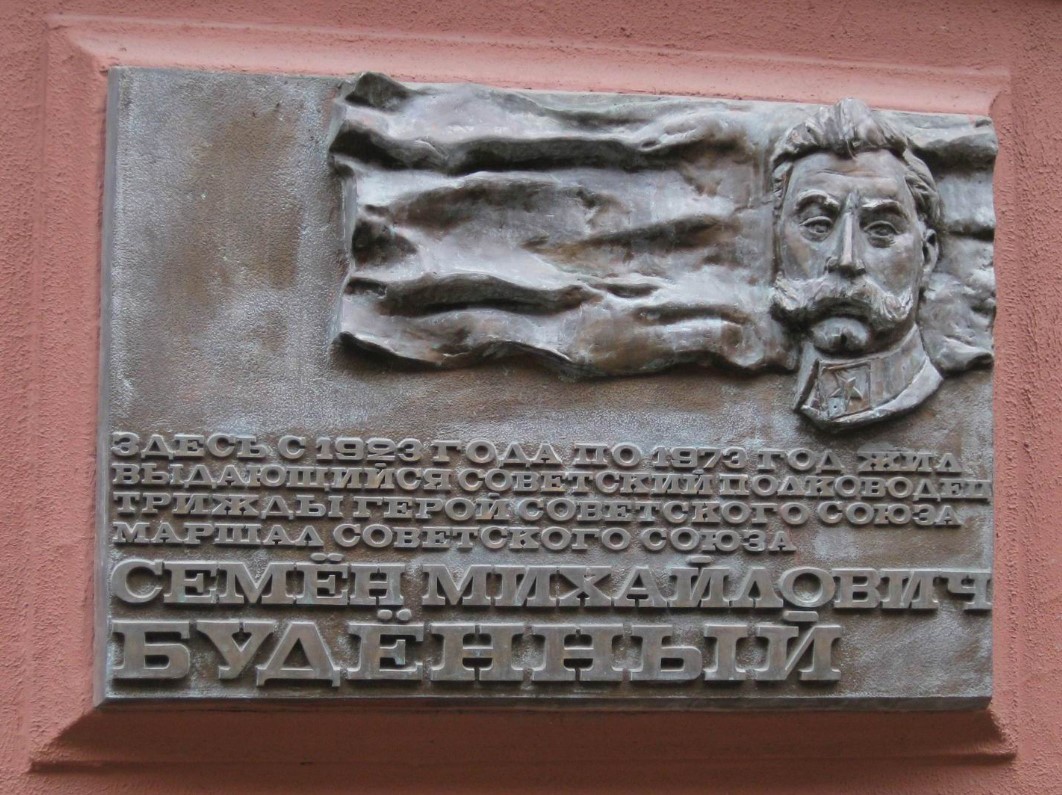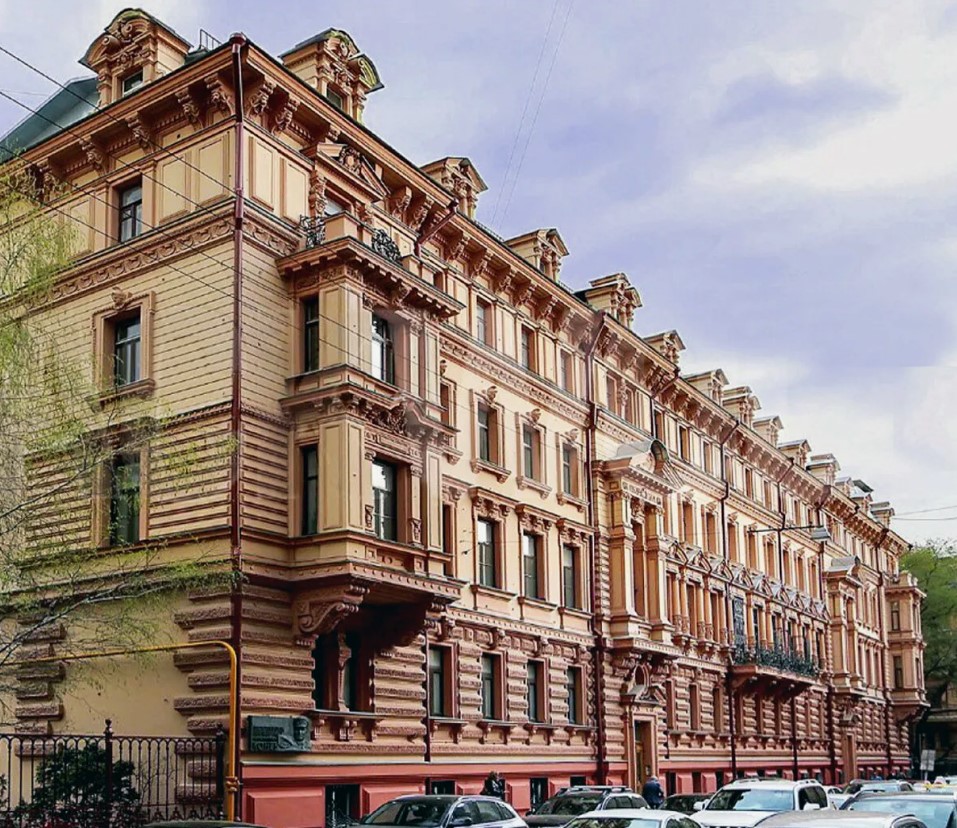Semyon Mikhailovich
Budyonny
1883-1973

Budyonny Semyon Mikhailovich was a Soviet military leader and statesman. A military commander of the Great Patriotic War, Marshal of the Soviet Union (November 20, 1935), three times Hero of the Soviet Union (February 1, 1958, April 24, 1963, February 22, 1968), and a hero of the Civil War. He was a member of the CPSU from 1919. He was born into a poor peasant family. From 1903, he served in the army with the 46th Don Cossack Regiment and participated in the Russo-Japanese War of 1904-1905. He graduated from the St. Petersburg Equestrian School (1908). Until 1914, he served in the Primorsky Dragoon Regiment. He participated in World War I as a senior non-commissioned officer in the 18th Seversky Dragoon Regiment on the German, Austrian, and Caucasian fronts, and was awarded four St. George Crosses for bravery. In the summer of 1917, he arrived in Minsk with the Caucasian Division, where he was elected chairman of the regimental committee and deputy chairman of the divisional committee. In August 1917, he participated in leading the disarming of echelons of Kornilov’s troops in Orsha. After the October Revolution, he returned to the Don region, to the Platovskaya stanitsa, and was elected a member of the Salsk District Executive Committee. He joined the Red Army in 1918. That same year, he formed a cavalry detachment to fight the White Guards, which grew into a regiment, a brigade, and then a cavalry division that operated successfully near Tsaritsyn in 1918 and early 1919. In June 1919, a cavalry corps was created under Budyonny’s command, which played a decisive role in defeating the White Guard forces in the Voronezh-Kastornensk operation of 1919. In November 1919, the corps was expanded into the 1st Cavalry Army, led by Budyonny, which played an important role in a number of major operations of the Civil War to defeat Denikin’s forces, Pilsudski’s armies in Ukraine, and Wrangel’s forces in Northern Taurida and Crimea. From 1921 to 1923, he was a member of the Revolutionary Military Council (RVS), and then deputy commander of the North Caucasus Military District. He carried out significant work organizing and managing stud farms, which through years of work developed new horse breeds-the Budyonny and Terek breeds. From 1923, Budyonny was Assistant to the Commander-in-Chief of the Red Army for Cavalry and a member of the RVS of the USSR. From 1924 to 1937, he was Inspector of Cavalry of the Red Army. He graduated from the Frunze Military Academy (1932). From 1937, he was Commander of the Moscow Military District and a member of the Main Military Council of the People’s Commissariat of Defense of the USSR, and from 1939 to 1940, he simultaneously held the position of Deputy People’s Commissar of Defense. From August 1940, he was First Deputy People’s Commissar of Defense. During the Great Patriotic War, he was part of the Stavka of the Supreme High Command. He served as Commander of the Army Group of the Stavka Reserve (June-July 1941), Commander-in-Chief of the Southwestern Direction (July 10, 1941 – September 13, 1941), Commander of the Reserve Front (September 13, 1941 – October 8, 1941), Commander-in-Chief of the North Caucasus Direction (April 26, 1942 – May 20, 1942), and Commander of the North Caucasus Front (May 20, 1942 – September 3, 1942). From January 1943, he was Commander of the Cavalry of the Soviet Army and a member of the Supreme Military Council of the Ministry of the Armed Forces of the USSR, and from 1947 to 1953, he simultaneously served as Deputy Minister of Agriculture for Horse Breeding. From May 1953 to September 1954, he was Inspector of Cavalry. He was a member of the All-Russian Central Executive Committee (VTsIK) from 1920, and of the Central Executive Committee (TsIK) of the USSR from 1922. He was a Deputy of the Supreme Soviet of the USSR of the 1st through 8th convocations, and from 1938, a member of the Presidium of the Supreme Soviet of the USSR. From 1934, he was a candidate member of the Central Committee of the All-Union Communist Party (Bolsheviks), and from 1939, a full member of the Central Committee. From 1952, he was a candidate member of the CPSU Central Committee. He is the author of the memoirs “The Path Travelled” (Vol. 1-2, 1959-1965). He was awarded seven Orders of Lenin, six Orders of the Red Banner, the Order of Suvorov 1st Class, the Order of the Red Banner of the Azerbaijan SSR, the Order of the Red Banner of Labour of the Uzbek SSR, orders of the Mongolian People’s Republic; a gold combat weapon with an Order of the Red Banner on it, an honorary revolutionary firearm with an Order of the Red Banner on it, and an honorary weapon-a saber with the image of the State Emblem of the USSR, as well as numerous medals.
Address: Moscow, Romanov lane, 3, building 1

